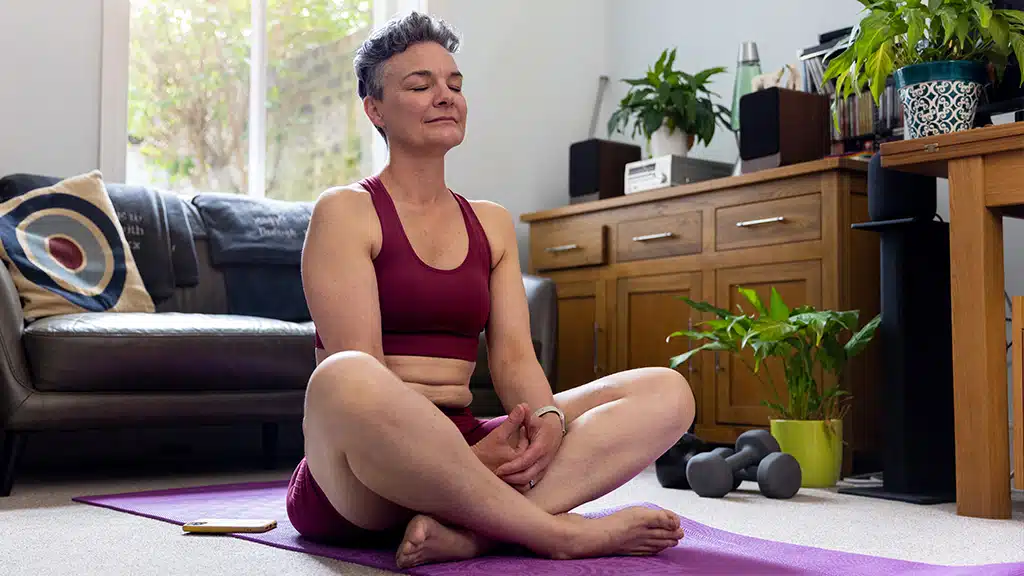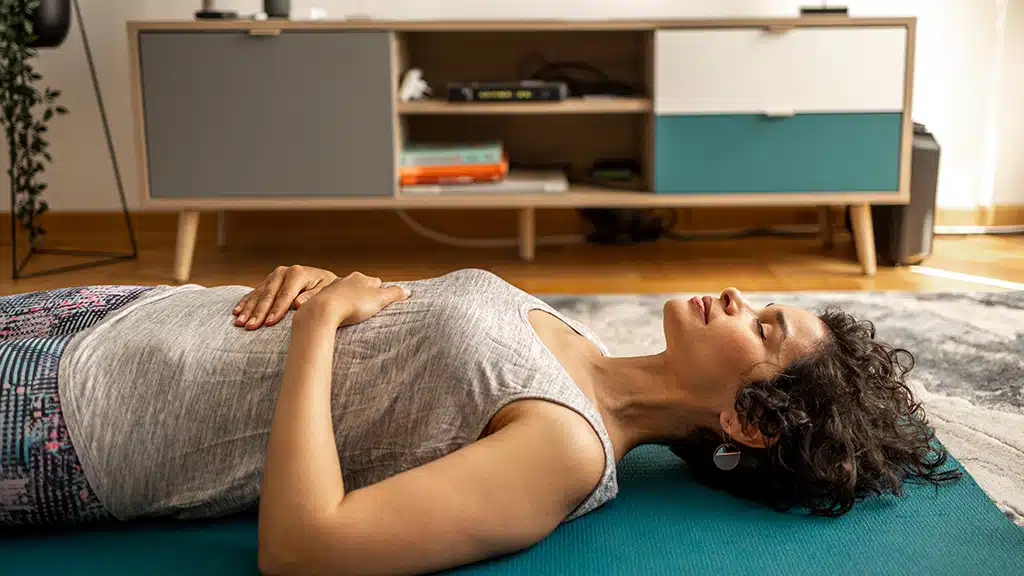Saprea > Online Healing Resources > Our Approach >Healing Resources: Grounding Techniques
As a survivor of child sexual abuse, you may have experienced a variety of long-term effects connected to the trauma that occurred in your past. Working to manage these effects and symptoms takes significant work, even with effective healing practices. One of the foundational techniques you can use to manage difficult moments is called “grounding.” This technique is particularly helpful as you encounter triggers and the responses they can cause in the brain and body such as flashbacks, panic attacks, dissociation, or acute anxiety.
What Does It Mean to “Ground” Myself?
Consider the analogy of sailing a sailboat on a lake. Taking your boat on the lake can be a wonderful outing, especially on a warm, sunny day. Your sailboat depends upon gentle breezes and winds to help you glide upon the water and travel to different marinas you want to see. But suddenly, a windstorm develops while you are sailing. The gentle breeze shifts into a violent force, and you start drifting toward a direction that you do not want to go. The strong winds create waves on the lake which rock your little boat. You need help to stabilize your sailboat to prevent it from rocking or capsizing into the water.
Even despite our best efforts to avoid them, all of us encounter situations which present triggering moments, arouse difficult emotions, or even raise unsettling physical reactions. We may be moving along on a calm day when, suddenly, a strong emotion overwhelms us. On the inside, we can feel just like that sailboat tossed on the lake by the strong winds and waves. What should we do?
“Anchors”
On a stormy lake, one immediate tactic we can take to help our little boat is to use an anchor. The weight of our anchor digs into the ground of the lakebed and keeps us from being pushed by the wind into danger (like a rocky shoreline which can puncture the side of our boat). The anchor doesn’t magically stop the wind from swirling around us, but it can help keep our sailboat from drifting too far by securing it to something that doesn’t change: the solid ground under the waves. With our boat connected to the ground, we can then take other precautions to keep our sailboat (and its passengers) secure until the storm passes.
When we encounter triggers, we can anchor our thoughts on a specific focus. Our mind can get pushed into unhelpful thinking patterns, so we can instead practice centering our thoughts and attention on helpful things while we work through difficulties. Our anchors can be physical too. One very powerful thing to focus our attention on is our breath. Other physical sensations (like touch or smell) can provide helpful “ground” that we can center upon instead of the thoughts or emotions that are swirling inside of us.
Sometimes we need to ground ourselves to the present (like if we are dissociating).
Sometimes we need to ground ourselves to something we can more directly control (like our breath).
“Moorings”
Those who sail often on the lake don’t always find it convenient to take their boat in and out of the water each time they want to enjoy an outing. Instead, they can tie their boat to a mooring. Moorings are permanent structures or holds we can attach our boat to. You might recognize common shoreline moorings that have buoys or large pillars that indicate where a boat can be safely tied. Moorings are designed to provide a secure place that can weather even the most violent storms and even floods. Where an anchor can be used for a temporary emergency out on the lake, a mooring is usually placed near the shore and is designed to never be moved.
We all need routines and practices in our life that offer us safety and security. You may find a grounding technique that is especially helpful for you. As you practice it again and again, it almost becomes an instinctive response that brings you back to a safe emotional place when you encounter a difficult moment. Your reliance on this grounding technique is just like mooring your sailboat to a secure spot on the shore. You know it will be helpful even if there are storms coming.
How Will Grounding Techniques Help Me Heal?
When you take action to ground yourself, you are practicing Mindfulness. Tuning into the sensations your body is experiencing and the thoughts your mind is thinking is a powerful step you can take towards healing from trauma. As you become more familiar with what you are experiencing, this empowers you to make insightful choices about how to best navigate through stressful situations and more fully embrace moments where you are happy, calm, or invigorated.
What Grounding Techniques Can I Try?
Ground Yourself in 5-4-3-2-1
This is a simple exercise many survivors have found to help them de-stress during moments of extreme emotions, dissociations, or flashbacks. It uses each of the five senses to root yourself in the present moment:
- Name 5 things you can see.
- Name 4 things you can feel.
- Name 3 things you can hear.
- Name 2 things you can smell.
- Name 1 thing you can taste.
Sensory Grounding
5-4-3-2-1 is one of many examples of sensory grounding. This type of grounding involves directing your attention toward one or more of your five senses, which can be especially helpful during times of acute distress, like panic attacks.
Some other examples of sensory grounding include:
- Holding an ice cube.
- Biting into a lemon, or another fruit.
- Placing your hands in water.
- Picking up an item near you and noting its shape, feel, texture, etc.
- Inhaling a strong scent.
- Slowly tracing an outline around your fingers.
- Stroking your pet.
Self-Soothe with a Butterfly Hug
The butterfly hug—sometimes referred to as the “self-love hug”—is an example of sensory grounding involving touch. It is also a self-soothing technique you can use any time you’re feeling stressed, anxious, or triggered.
This exercise is simple:
- Get in a comfortable position, either sitting or lying down.
- Then, cross your arms over your chest and rest the tips of your fingers on your collarbone, shoulders, or arms.
- Next, gently tap your arms, alternating sides. As you do so, breathe in and out. Tap for as long as you need to.
- When it feels right, rest your hands and let your attention come back to the present moment.
Positive Affirmations
Positive affirmations are sentences that you say to yourself to remind you of your value, how far you’ve come, and how capable you are of continuing on your healing journey. When you notice your thoughts start to veer towards a shame-based direction, you can use positive affirmations to redirect those thoughts back to the present and anchor yourself in feelings of encouragement and empowerment. Some examples might be:
- I am enough.
- I’m learning to love myself.
- I choose happiness.
- I have strength and power to take whatever comes my way.
- I can do challenging things.
- I am grateful for this day and the many possibilities it affords.
Choose a Tangible Object as Your Anchor
Above we talked about how grounding techniques are like anchors that help center our thoughts and emotions. Some survivors have found it effective to select an actual object to serve as their “anchor.” It may be something you can hold and carry around in your pocket or a piece of jewelry that you wear. Once you’ve identified your object of choice, decide where you’d like to keep it, whether it’s in your pocket, on your desk at work, on your nightstand, etc. Throughout your day or during tough moments, touch or hold the object to direct your attention toward your anchor and the empowering thoughts and feelings you associate with it.
Crisis Card
Creating a crisis card empowers you with a back-up plan you can have with you at all times. This card serves as a reminder of what steps you need to take and who you can contact when you are experiencing an emotional crisis.
Walking
Walking strengthens the connection between your mind and body and allows you space to engage in both Mindfulness and physical movement. Research at Stanford University shows that specifically walking in nature has a positive effect on emotional regulation and mood.
Cognitive Tasks
Engaging in a cognitive or thought-provoking task can help you activate the frontal lobe. Some examples of cognitive tasks include:
- Reciting a familiar phone number, address, or locker combination
- Picking a category (animals, breakfast foods, desserts, movies, travel destinations, etc.) and writing down as many items in that category that you can think of
- Writing your name or favorite quote with your non-dominant hand
As you try out different grounding techniques and incorporate them into your routine, you are practicing:
- Acknowledgement by recognizing the distressing responses you sometimes experience as a result of your alarmed limbic system, and your need to find ways to manage those responses.
- Mindfulness by exploring ways to center your attention on a specific object or detail to help you soothe your triggered limbic system and reconnect with the present moment.
- Aspiration by finding a grounding technique that works best for you and practicing it until it becomes a familiar coping mechanism you can utilize in future situations.
Healing Resources for Additional Grounding Techniques

Meditation

Paced Breathing
